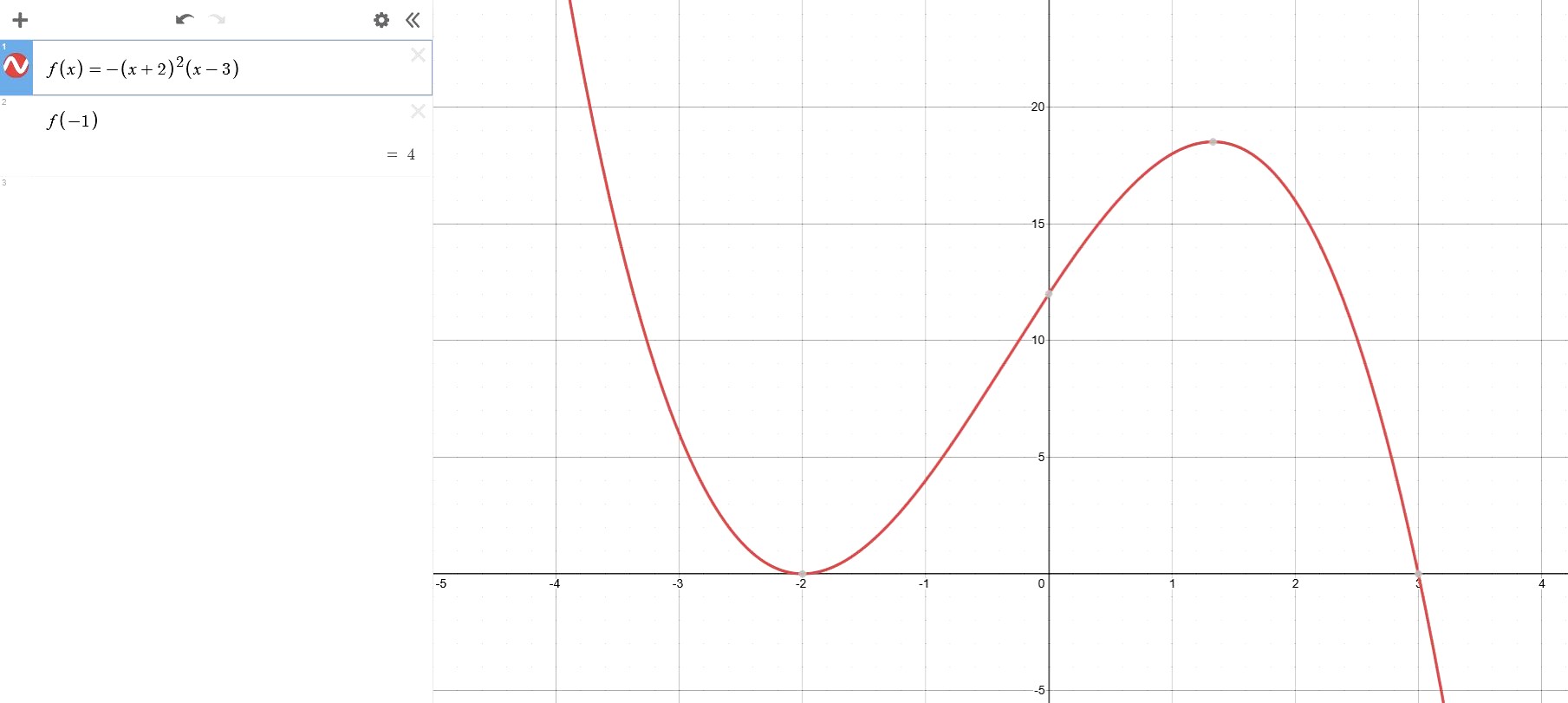Eric Nicholas K's answer to J's Secondary 3 A Maths Singapore question.
done
{{ upvoteCount }} Upvotes
clear
{{ downvoteCount * -1 }} Downvotes
One possible graph, along with its equation. One of the roots must be a repeated root, and in my this case I let x = -2 be the repeated root so that
f(x) = - (x + 2)² (x - 3)
The negative sign in front is to reflect the fact that the coefficient of x³ is -1.
When divided by x + 1, by the Remainder Theorem, the remainder is f (-1)
= - (-1 + 2)² (-1 - 3)
= - (1) (-4)
= 4
I will do a similar version for the other case.
f(x) = - (x + 2)² (x - 3)
The negative sign in front is to reflect the fact that the coefficient of x³ is -1.
When divided by x + 1, by the Remainder Theorem, the remainder is f (-1)
= - (-1 + 2)² (-1 - 3)
= - (1) (-4)
= 4
I will do a similar version for the other case.
Date Posted:
3 years ago
Rachel you can see the repeated root part as though as it's like the usual quadratic graph where the discriminant = 0 (real and equal/repeated roots). It only intersects the x/axis at 1 point.
This helps you to know which turning point of the graph should touch the x-axis
This helps you to know which turning point of the graph should touch the x-axis



